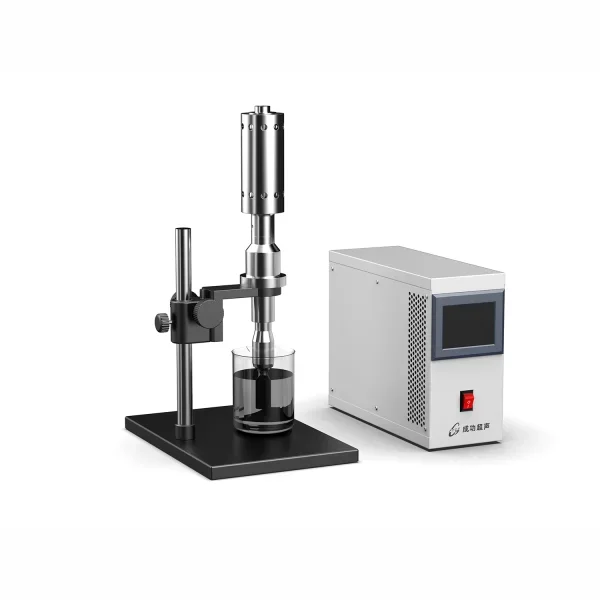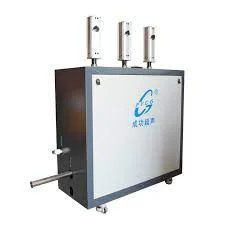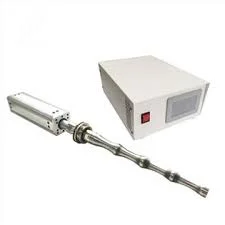Are you familiar with the power of sound waves? Ultrasonic sonochemical machines can use sound waves to play a very important role in everything from enhancing chemical reactions to cleaning and disinfection. In this blog post, we’ll take a closer look at the applications of ultrasonic sonochemical machines and explore their wide range of uses and benefits.
The Science Behind Ultrasonic Sonochemistry
Ultrasonic sonochemistry is a fascinating field that combines the power of ultrasound waves with chemistry to create unique and efficient chemical reactions. At its core, sonochemistry harnesses the energy generated by high-frequency sound waves to induce physical and chemical changes in liquids.
The science behind ultrasonic sonochemistry lies in a phenomenon known as acoustic cavitation. When powerful ultrasound waves pass through a liquid medium, they create tiny bubbles or cavities due to the alternating compression and expansion of the liquid. These bubbles then rapidly collapse under intense pressure, resulting in localized hotspots with temperatures reaching thousands of degrees Celsius and pressures up to 1000 atmospheres.
These extreme conditions within the collapsing bubbles give rise to various physical effects such as shockwaves, microjets, and turbulence. These effects promote rapid mixing, enhanced mass transfer, increased reaction rates, and even break down complex molecules into simpler compounds.
Moreover, ultrasonic sonochemistry also facilitates processes like emulsification and dispersion by breaking down larger particles into smaller ones. This makes it particularly useful in industries such as pharmaceuticals, cosmetics, food processing, and wastewater treatment.
In recent years, researchers have also explored novel applications of ultrasonic sonochemistry including nanoparticle synthesis for drug delivery systems or catalytic materials. By carefully controlling process parameters such as frequency and power intensity, scientists can precisely engineer desired particle sizes or morphologies.
Understanding the science behind ultrasonic sonochemistry allows us to tap into its immense potential across numerous industries. The ability to enhance chemical reactions through controlled cavitation opens up exciting possibilities for more sustainable manufacturing processes while improving efficiency and product quality along the way.

Applications of Ultrasonic Sonochemistry
Ultrasonic sonochemistry machines have a wide range of applications across various industries. One major application is in the field of pharmaceuticals, where it is used for drug synthesis and formulation. The high-intensity ultrasound waves help to enhance the reaction rates and improve product quality.
In the food industry, ultrasonic sonochemistry is used for various purposes such as emulsification, extraction, and flavor enhancement. It can be used to create stable emulsions, extract bioactive compounds from natural sources, and intensify flavors in food products.
Another important application is in wastewater treatment. Ultrasonic sonochemistry helps to break down organic pollutants present in wastewater through a process called sonolysis. This leads to more efficient removal of contaminants and improved water quality.
The use of ultrasonic sonochemistry extends beyond just industrial applications. It can also be utilized in research laboratories for cell disruption, nanoparticle synthesis, and DNA fragmentation.
Ultrasonic sonochemistry has diverse applications ranging from pharmaceuticals to food production and environmental remediation. Its ability to enhance chemical reactions and improve efficiency makes it a valuable tool in multiple industries.
Industrial Uses of Ultrasonic Sonochemistry
Ultrasonic sonochemistry machines have found numerous applications in various industries, thanks to their ability to enhance chemical reactions through the use of high-frequency sound waves. One prominent industrial use of these machines is in the production of nanoparticles. By subjecting a solution containing precursor materials to ultrasonic waves, researchers can induce rapid and controlled nucleation and growth, resulting in the formation of uniform nanoparticles with desirable properties.
Another important application lies in the field of catalysis. Ultrasonic sonochemistry can significantly accelerate catalytic reactions by improving mass transfer and increasing surface area contact between reactants. This has proven beneficial for various processes such as petroleum refining, pharmaceutical manufacturing, and wastewater treatment.
Additionally, ultrasonic sonochemistry plays a vital role in emulsification processes used across different industries. The cavitation effect generated by ultrasonic waves helps create stable emulsions by breaking down larger droplets into smaller ones, leading to improved product stability and quality.
Furthermore, this technology finds application in polymer chemistry where it assists in polymer synthesis and modification. The intense energy released during cavitation facilitates better mixing and dispersion of monomers or additives within a polymer matrix, resulting in improved material properties.
Other notable industrial uses include degassing liquids (removal of dissolved gases), extraction processes (enhanced extraction efficiency), and even food processing (improved flavor infusion).
The use cases for ultrasonic sonochemistry machines within industries are vast and diverse. From nanoparticle production to catalysis enhancement, emulsification improvement to polymer synthesis facilitation – these machines continue to revolutionize multiple sectors through their unique capabilities. As research advances further into understanding the science behind ultrasonic sonochemistry, we can expect even more innovative applications that will shape our industrial landscape for years to come.

Cleaning and Disinfecting with Ultrasonic Sonochemistry
Cleaning and disinfecting have become more important than ever in our current climate. Traditional cleaning methods may not always be effective in reaching every nook and cranny, especially when it comes to delicate or complex items. This is where ultrasonic sonochemistry machines come into play.
These powerful machines use high-frequency sound waves to create microscopic bubbles in a liquid cleaning solution. When these bubbles collapse, they produce intense energy that can effectively clean surfaces at a microscopic level. The process is known as cavitation.
One of the key advantages of using ultrasonic sonochemistry for cleaning and disinfecting is its ability to reach even the tiniest crevices that are difficult to access manually. This makes it ideal for cleaning intricate objects such as jewelry, medical instruments, electronics, and even automotive parts.
Moreover, ultrasonic sonochemistry machines can remove stubborn contaminants like dirt, oil, grease, bacteria, viruses, and mold without causing any damage to the object being cleaned. It provides a thorough and efficient cleaning process while also reducing the need for harsh chemicals or excessive scrubbing.
Another benefit of this technology is its time-saving nature. With traditional methods, it can take a significant amount of time and effort to properly clean certain items. However; with an ultrasonic sonochemistry machine; you can achieve optimal cleanliness in a fraction of the time.
However; there are limitations to consider when using ultrasonic sonochemistry for cleaning purposes – particularly with delicate materials or objects that cannot withstand exposure to water or chemical solutions due to their composition.
In conclusion; Ultrasonic sonochemistry machines offer an innovative solution for efficient cleaning and disinfection across various industries including healthcare facilities; laboratories; manufacturing plants; jewelry stores etc.; providing unmatched precision without compromising on effectiveness or safety.
Advantages and Limitations of Ultrasonic Sonochemistry
Ultrasonic sonochemistry machines offer a range of advantages that make them valuable tools in various industries. One major advantage is their ability to enhance chemical reactions by accelerating the process. The high-frequency sound waves generated by these machines create cavitation bubbles, which implode and create localized extreme temperatures and pressures. This intense energy can break down molecules, increase reaction rates, and improve yield.
Another advantage of ultrasonic sonochemistry is its versatility. These machines can be used with various types of solvents, making them suitable for a wide range of applications. Additionally, they are compact in size and easy to operate, allowing for convenient use in both laboratory settings and industrial applications.
Furthermore, ultrasonic sonochemistry offers environmental benefits compared to traditional chemical processes. The acceleration of reactions means shorter processing times, reducing the consumption of energy resources. Additionally, it often eliminates or reduces the need for harsh chemicals or elevated temperatures required by conventional methods.
However, there are also limitations to consider when using ultrasonic sonochemistry machines. One limitation is the possibility of material damage due to cavitation effects on delicate surfaces or structures within samples. This may restrict its application in certain situations where preservation or integrity is critical.
Additionally, while ultrasonic sonochemistry enhances many reactions, not all chemical processes benefit from this technique equally. Some reactions may not experience significant improvement through ultrasound-assisted methods or may even be adversely affected.
Despite some limitations inherent in its mechanism and compatibility with certain materials or processes,ultrasonic sonochemistry offers numerous advantages such as accelerated reaction rates,improved yields,versatility across multiple solvents,reduced reliance on harsh chemicals,and overall environmental benefits.
By understanding these strengths and limitations,scientists and researchers can harness the power of ultrasonic sonochemistry to advance innovation across a wide range of industries.

Conclusion
Ultrasonic chemical machines provide a powerful and versatile way to enhance chemical reactions and processes across a variety of industries.
The cavitation phenomenon produced by ultrasonic high-frequency sound waves leads to intense mixing, emulsification, dispersion and extraction processes. This enables faster reaction rates, increased yields and reduced energy consumption.
The applications of ultrasonic sonochemistry are wide and varied. In the pharmaceutical industry, it is used in drug synthesis, nanoparticle manufacturing, and formulation development. In the food industry, it helps enhance flavor, extract bioactive compounds from natural sources such as herbs or fruits, and improve product quality. It can also play a role in environmental remediation by promoting wastewater treatment by enhancing the degradation of pollutants.
Hangzhou Successful Ultrasound Equipment Co., Ltd. is a domestic professional manufacturer engaged in ultrasonic application research, development and production of high-power ultrasonic transducers, and is a national high-tech enterprise. The company's main products include transducers, ultrasonic drive power supplies, etc. As the core and key components of power supplies, these products are widely used in sonochemistry, plastic welding, metal welding, rubber cutting, non-woven fabric welding and other ultrasonic application industries.
Welcome to contact us,if you are interested in our products.
Email:[email protected]
